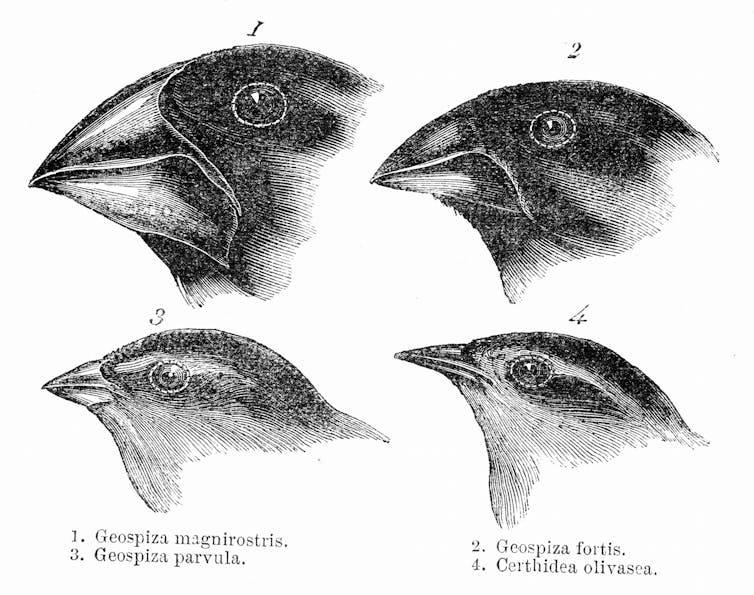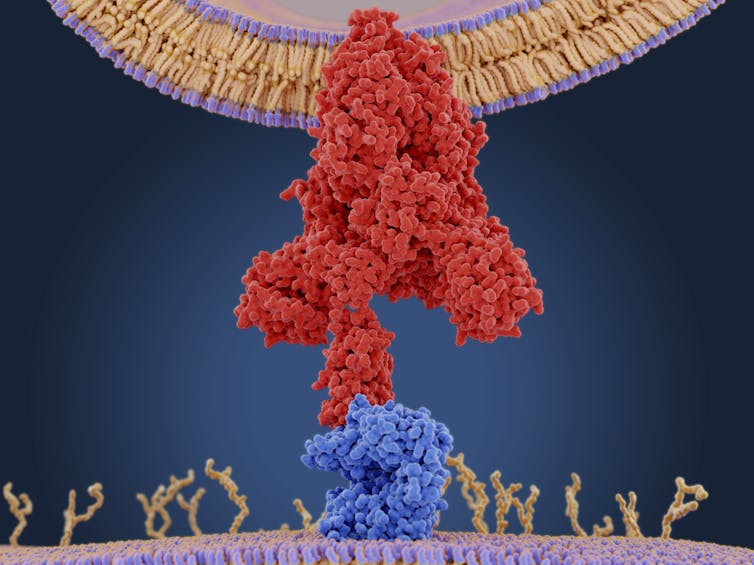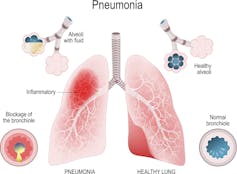Survival Of The Fittest Means
Charles Darwin popularized the concept of survival of the fittest as a mechanism underlying the natural selection that drives the evolution of life. Organisms with genes better suited to the environs are selected for survival and pass them to the next generation.
Thus, when a new infection that the world has never seen before erupts, the process of natural selection starts all once more.
In the context of the coronavirus pandemic, who is the "fittest"?
This is a challenging question. Merely as immunology researchers at the University of Due south Carolina, we tin say one thing is articulate: With no constructive treatment options, survival against the coronavirus infection depends completely on the patient's immune response.
We have been working on how the immune response is a double-edged sword – on one hand helping the host to fight infections, while on the other paw causing meaning damage in the form of autoimmune diseases.

The two phases of the immune response
The immune response is like a car. To achieve a destination safely, you need both an accelerator (phase 1) and a brake (stage 2) that are functioning well. Failure in either tin accept significant consequences.
An constructive immune response against an infectious agent rests in the delicate residue of two phases of action. When an infectious agent attacks, the torso begins stage 1, which promotes inflammation – a land in which a variety of immune cells gather at the site of infection to destroy the pathogen.
This is followed past phase two, during which allowed cells called regulatory T cells suppress inflammation so that the infected tissues tin completely heal. A deficiency in the first phase can allow uncontrolled growth of the infectious agent, such as a virus or bacteria. A defect in the second phase can trigger massive inflammation, tissue damage and expiry.
The coronavirus infects cells by attaching to a receptor called the angiotensin-converting enzyme 2 (ACE2), which is present in many tissues throughout the body, including the respiratory tract and cardiovascular system. This infection triggers a phase 1 immune response, in which the antibody-producing B-cells pump out neutralizing antibodies that can bind to the virus and forbid it from attaching to ACE2. This inhibits the virus from infecting more than cells.
During phase 1, the allowed cells also produce cytokines, a group of proteins that recruit other allowed cells as well as fight infection. Also joining the fight are killer T cells that destroy the virus-infected cells, preventing the virus from replicating.
If the immune arrangement is compromised and works poorly during phase i, the virus can replicate rapidly. People with compromised immune systems include the elderly, organ transplant recipients, patients with autoimmune diseases, cancer patients undergoing chemotherapy and individuals who are born with immunodeficiency diseases. Many of these individuals may not produce plenty antibodies or killer T cells to counter the virus, which allows the virus to multiply unchecked and cause a severe infection.

Lung injury resulting from inflammation
Increased replication of SARS-CoV-two triggers additional complications in the lungs and other organs.
Normally, in that location is a wide range of microorganisms, both harmful and benign, that alive in harmony in the lungs. However, as the coronavirus spreads, it is probable that the infection and the inflammation that ensues will disrupt this balance, allowing harmful leaner nowadays in the lungs to dominate. This leads to development of pneumonia, in which the lungs' air sacs, called alveoli, go filled with fluid or pus, making it difficult to breathe.

This triggers additional inflammation in the lungs, leading to Acute Respiratory Distress Syndrome (ARDS), which is seen in a third of COVID-xix patients. The immune system, unable to control viral infection and other emerging pathogens in the lungs, mounts an even stronger inflammatory response by releasing more cytokines, a status known as "cytokine storm."
At this stage, information technology is also likely that the phase 2 immune response aimed at suppressing inflammation fails and can't control the cytokine tempest. Such cytokine storms can trigger friendly fire – destructive, corrosive chemicals meant to destroy infected cells that are released by the torso'due south immune cells which can pb to severe damage to the lungs and other organs.
Also, because ACE2 is present throughout the body, the killer T cells from phase 1 can destroy virus-infected cells across multiple organs, causing more widespread devastation. Thus, patients that produce excessive cytokines and T cells tin can die from injury non but to the lungs only also to other organs such as the heart and kidneys.
The immune system's balancing human action
The above scenario raises several questions regarding prevention and treatment of COVID-nineteen. Considering the bulk of people recover from coronavirus infection, it is likely that a vaccine that triggers neutralizing antibodies and T cells to block the virus from getting into the cells and replicate is likely to be successful. The key to an effective vaccine is that it doesn't trigger excessive inflammation.
Additionally, in patients who transition to a more severe form such as ARDS and cytokine storm, which is often lethal, in that location is an urgent demand for novel anti-inflammatory drugs. These drugs tin can broadly suppress the cytokine tempest without causing excessive suppression of immune response, thereby enabling the patients to clear the coronavirus without impairment to the lung and other tissues.
There may be only a narrow window of opportunity during which these immunosuppressive agents tin be effectively used. Such agents should not be started at an early phase of infection when the patient needs the immune organisation to fight the infection, but it cannot be delayed too long after ARDS evolution, when the massive inflammation is uncontrollable. This window of anti-inflammatory handling can be adamant by monitoring the antibody and cytokine levels in patients.
With COVID-19, and then, the "fittest" are individuals who mount a normal phase 1 and phase 2 immune response. This ways a strong immune response in phase ane to articulate the primary coronavirus infection and inhibit its spread in the lungs. Then this should be followed by an optimum phase 2 response to forbid excessive inflammation in the course of "cytokine tempest."
Vaccines and anti-inflammatory treatments demand to carefully manage this delicate balancing act to be successful.
With this coronavirus, it isn't like shooting fish in a barrel to know who are the fittest individuals. Information technology isn't necessarily the youngest, strongest or near athletic individuals who are guaranteed to survive this coronavirus. The fittest are those with the "right" immune response who can articulate the infection chop-chop without mounting excessive inflammation, which can be deadly.
[Become facts most coronavirus and the latest research. Sign upward for The Conversation'south newsletter.]
Survival Of The Fittest Means,
Source: https://theconversation.com/what-does-survival-of-the-fittest-mean-in-the-coronavirus-pandemic-look-to-the-immune-system-137355
Posted by: martinguill2000.blogspot.com


0 Response to "Survival Of The Fittest Means"
Post a Comment